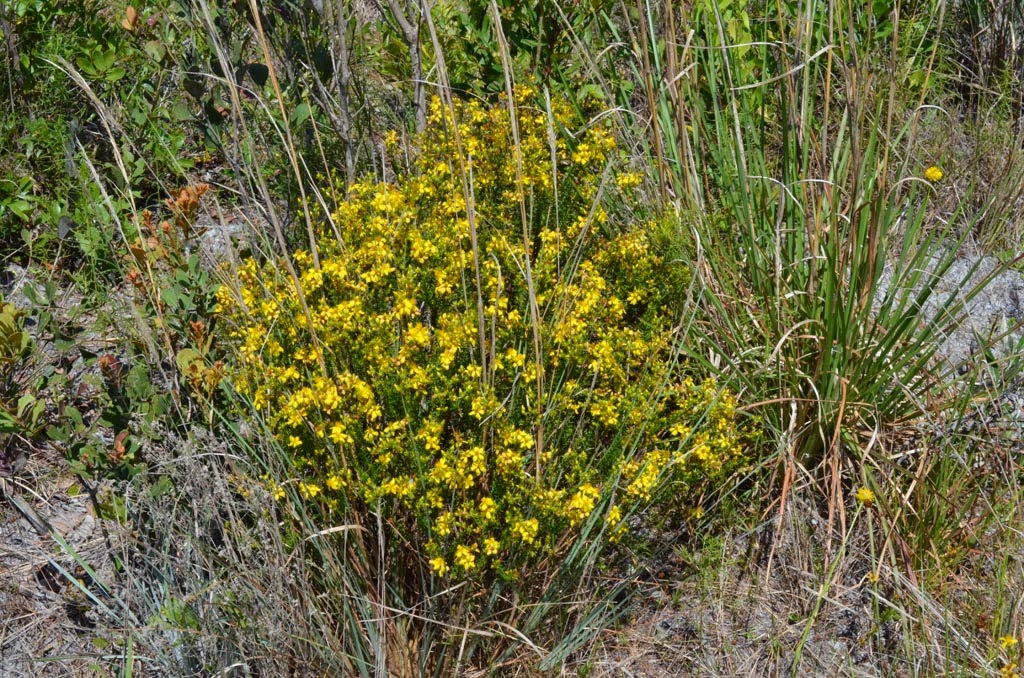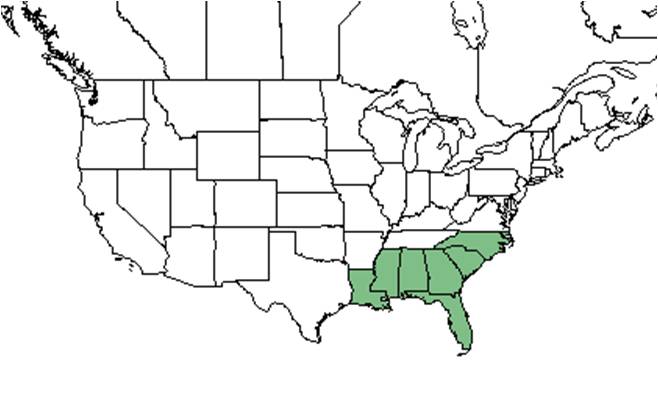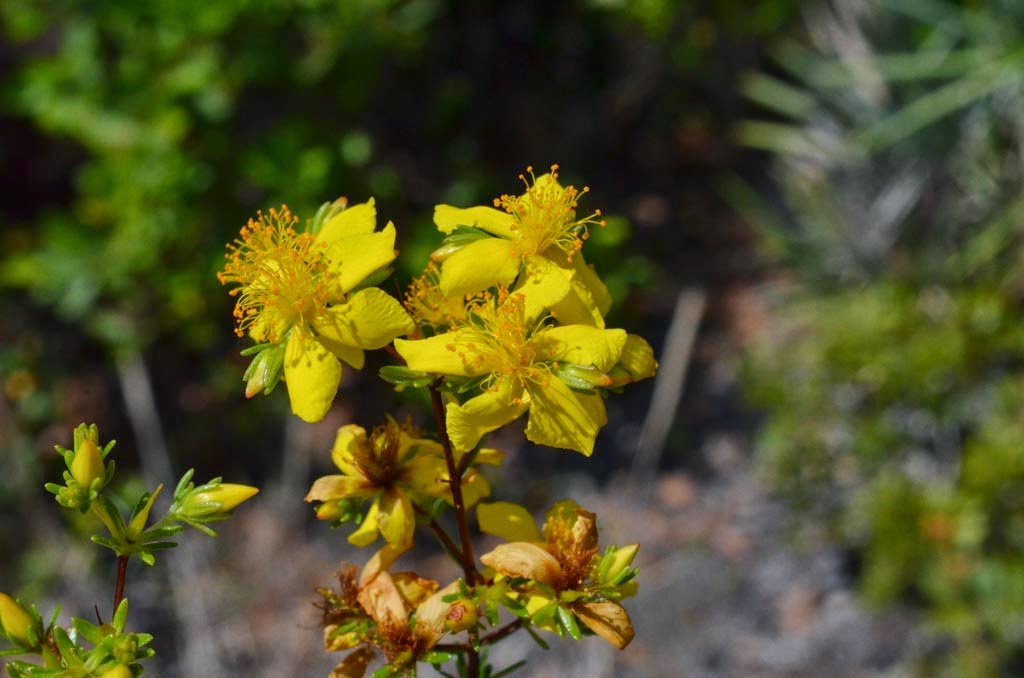Difference between revisions of "Hypericum fasciculatum"
(→References and notes) |
|||
| Line 19: | Line 19: | ||
Common name: Peelbark St. Johnswort | Common name: Peelbark St. Johnswort | ||
| − | + | ==Taxonomic notes== | |
==Description== | ==Description== | ||
<!-- Basic life history facts such as annual/perennial, monoecious/dioecious, root morphology, seed type, etc. --> | <!-- Basic life history facts such as annual/perennial, monoecious/dioecious, root morphology, seed type, etc. --> | ||
| Line 29: | Line 29: | ||
==Distribution== | ==Distribution== | ||
| − | |||
==Ecology== | ==Ecology== | ||
===Habitat=== <!--Natural communities, human disturbed habitats, topography, hydrology, soils, light, fire regime requirements for removal of competition, etc.--> | ===Habitat=== <!--Natural communities, human disturbed habitats, topography, hydrology, soils, light, fire regime requirements for removal of competition, etc.--> | ||
| Line 49: | Line 48: | ||
<!--===Use by animals===--> <!--Herbivory, granivory, insect hosting, etc.--> | <!--===Use by animals===--> <!--Herbivory, granivory, insect hosting, etc.--> | ||
<!--===Diseases and parasites===--> | <!--===Diseases and parasites===--> | ||
| − | + | ==Conservation and management== | |
==Cultivation and restoration== | ==Cultivation and restoration== | ||
It contains volatile extracts primarily of composed of decyl acetate and gamma-muurolene, and has been used as cathartic agent in traditional Seminole Indian medicine (Crockett et al. 2008). | It contains volatile extracts primarily of composed of decyl acetate and gamma-muurolene, and has been used as cathartic agent in traditional Seminole Indian medicine (Crockett et al. 2008). | ||
| − | |||
==Photo Gallery== | ==Photo Gallery== | ||
<gallery widths=180px> | <gallery widths=180px> | ||
File: Hype_fasc078.jpg | <center> Flowers of ''Hypericum'' ''fasciculatum'' <p> Photo by Wayne Matchett, [http://www.spacecoastwildflowers.com SpaceCoastWildflowers.com] </p> | File: Hype_fasc078.jpg | <center> Flowers of ''Hypericum'' ''fasciculatum'' <p> Photo by Wayne Matchett, [http://www.spacecoastwildflowers.com SpaceCoastWildflowers.com] </p> | ||
</gallery> | </gallery> | ||
| − | |||
==References and notes== | ==References and notes== | ||
Carr, D. W., D. A. Leeper, et al. (2006). "Comparison of six biologic indicators of hydrology and the landward extent of hydric soils in west-central Florida, USA cypress domes." Wetlands 26(4): 1012-1019. | Carr, D. W., D. A. Leeper, et al. (2006). "Comparison of six biologic indicators of hydrology and the landward extent of hydric soils in west-central Florida, USA cypress domes." Wetlands 26(4): 1012-1019. | ||
Revision as of 14:53, 23 June 2016
| Hypericum fasciculatum | |
|---|---|

| |
| Photo by Wayne Matchett, SpaceCoastWildflowers.com | |
| Scientific classification | |
| Kingdom: | Plantae |
| Division: | Magnoliophyta - Flowering plants |
| Class: | Magnoliopsida - Dicotyledons |
| Order: | Theales |
| Family: | Clusiaceae ⁄ Guttiferae |
| Genus: | Hypericum |
| Species: | H. fasciculatum |
| Binomial name | |
| Hypericum fasciculatum Lam. | |

| |
| Natural range of Hypericum fasciculatum from USDA NRCS Plants Database. | |
Common name: Peelbark St. Johnswort
Contents
Taxonomic notes
Description
H. fasciculatum is a short lived perennial that has a single stem with reddish bark and forms thin adventitious roots. It can be distinguished from similar species, such as H. brachyphyllum by having flat leaves with no apparent fold [1].
“Usually glabrous herbs or shrubs. Leaves usually punctate, simple, opposite, entire, usually sessile or subsessile, exstipulate. Inflorescence basically cymose; flowers perfect, regular, bracteates, subsessile or short-pedicellate, sepals 2, 4, or 5, persistent; petals 4 or 5, usually marcescent, yellow or pink; stamens 5-numerous, separate or connate basally forming 3-5 clusters or fascicles, filaments usually persistent; carpels 2-5, stigmas and styles separate or fused, ovary superior, 1-locular or partly or wholly 2-5 locular, placentation axile or parietal. Capsules basically ovoid, longitudinally dehiscent, styles usually persistent; seeds numerous, lustrous, areolate, cylindric or oblong. In general our species form a polymorphic complex with many intergrading taxa.” – Radford et al 1964
"Erect shrub, 8-15 dm tall, much-branched above, spongy-thickened below. Leaves linear-subulate or linear, with 2 longitudinal grooves below, largest usually 13-26 mm long, 0.7-2 mm wide, acute, base notched, sessile. Flowers terminal and axillary, solitary or in cymules. Sepals 5, similar to the leaves, 3-7 mm long, usually more than 4.5 mm long; petals 5, 6-9 mm long; styles united or 3, usually separate in fruit, ovary 3-locular. Capsules ovoid, ca. 4.5 mm long and 2mm broad; mature seeds not seen." - Radford et al 1964
Distribution
Ecology
Habitat
In the Coastal Plain in Florida and Georgia, H. fasciculatum can occur in Nyssa/Ilex communities, dry pond margins, ditches in pine flatwoods, titi bogs, rotted stumps, and dry bottoms of cypress ponds (FSU Herbarium). It responds to an annual, seasonal, or short-term change in water level by rapid colonization of favorable habitats and development of adventitious roots (Carr et al. 2006). Associated species include Ilex myrtifolia, Eriocaulon lineare, Xyris, Rhynchospora corniculata, and Lycopodiella. It grows in moist loamy sand (FSU Herbarium).
Phenology
It has been observed flowering in June and October and fruiting October through December (FSU Herbarium).
Pollination
The following Hymenoptera families and species were observed visiting flowers of Hypericum fasciculatum at Archbold Biological Station (Deyrup 2015):
Apidae: Apis mellifera, Bombus impatiens
Colletidae: Colletes nudus
Megachilidae: Coelioxys sayi
Conservation and management
Cultivation and restoration
It contains volatile extracts primarily of composed of decyl acetate and gamma-muurolene, and has been used as cathartic agent in traditional Seminole Indian medicine (Crockett et al. 2008).
Photo Gallery
Flowers of Hypericum fasciculatum Photo by Wayne Matchett, SpaceCoastWildflowers.com
References and notes
Carr, D. W., D. A. Leeper, et al. (2006). "Comparison of six biologic indicators of hydrology and the landward extent of hydric soils in west-central Florida, USA cypress domes." Wetlands 26(4): 1012-1019.
Crockett, S. L., B. Demirçi, et al. (2008). "Volatile Constituents of Hypericum L. Section Myriandra (Clusiaceae): Species of the H. fasciculatum Lam. Alliance." Journal of Essential Oil Research 20(3): 244-249.
Deyrup, M.A. and N.D. 2015. Database of observations of Hymenoptera visitations to flowers of plants on Archbold Biological Station, Florida, USA.
Florida State University Robert K. Godfrey Herbarium database. URL: http://herbarium.bio.fsu.edu. Last accessed: October 2015. Collectors: Loran C. Anderson, Sara L. Crockett, R.K. Godfrey, Howard Horne, Virginia Jin, R. Komarek, K. MacClendon, T. MacClendon, Sidney McDaniel, R.A. Norris, Cecil R. Slaughter. States and Counties: Florida: Calhoun, Liberty, Osceola, Wakulla, Walton. Georgia: Clinch, Thomas. Compiled by Tall Timbers Research Station and Land Conservancy.
Radford, Albert E., Harry E. Ahles, and C. Ritchie Bell. Manual of the Vascular Flora of the Carolinas. 1964, 1968. The University of North Carolina Press. 709-713. Print.
